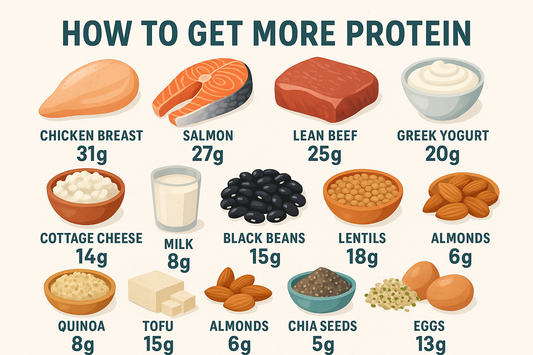Choosing between a stationary bike and a spin bikes can significantly impact your fitness journey. Both offer effective cardiovascular workouts, but they differ in design, functionality, and the experience they provide. Understanding these differences will help you select the option that best aligns with your fitness goals, comfort preferences, and lifestyle needs.

Understanding the Basics
What is an Exercise Bike?
Exercise bikes broadly fall into two main categories: traditional stationary bikes and spin bikes (also called indoor cycling bikes). While both provide seated cycling workouts, they differ significantly in their construction, riding position, and intended use. Stationary bikes typically feature more comfortable seats, upright positioning, and user-friendly consoles with preset programs. Spin bikes, designed to mimic road cycling, offer a more aggressive riding position, heavier flywheels, and fewer electronic features, focusing instead on performance and training specificity.
Key Differences
Bike vs Spin: Purpose and Design
Stationary bikes are engineered primarily for general fitness, rehabilitation, and moderate cardio training. They typically feature large, cushioned seats, back supports on some models, and a more relaxed, upright riding position that reduces strain on the back and shoulders. The pedaling motion on stationary bikes usually incorporates a fixed gear system with a lighter flywheel (typically 8-15 pounds), creating a smoother, more controlled experience with less momentum.
Spin bikes, conversely, are designed to replicate the experience of road cycling. They feature narrower seats, drop handlebars that allow for multiple riding positions, and a frame geometry that places the rider in a more aggressive, forward-leaning position. The heavy flywheel (typically 30-50 pounds) creates significant momentum, requiring more effort to start and stop, which more accurately simulates outdoor cycling dynamics.
Adjustable Resistance and Comfort
Resistance mechanisms differ significantly between the two bike types. Stationary bikes typically utilize magnetic or electronic resistance systems that provide precise, quantifiable resistance levels (often displayed as levels 1-20). This resistance remains consistent throughout the pedal stroke and can be adjusted via console buttons or pre-programmed workout profiles.
Spin bikes traditionally use friction-based resistance, where a felt or leather pad directly contacts the flywheel. This is adjusted using a tension knob that increases or decreases pressure on the flywheel. Premium spin bikes now offer magnetic resistance systems that provide silent operation while maintaining the characteristic road-like feel. Unlike stationary bikes, spin bikes allow for instantaneous resistance adjustments during workouts, facilitating interval training and simulating hill climbs more effectively.
Fitness Goals and Levels
Fitness Goals and Bike Choice
Your fitness objectives should heavily influence your choice between these bike types. Stationary bikes excel for those seeking general cardiovascular improvement, rehabilitation from injuries, or consistent moderate exercise. Their programmed workouts, heart rate monitoring, and comfortable design make them ideal for longer, steady-state sessions and gradual progression.
Spin bikes are superior for those targeting performance improvements, intense calorie burning, or specific cycling training. They excel at high-intensity interval training (HIIT), simulate real cycling mechanics more accurately, and engage more core and upper body muscles due to their positioning. The ability to stand while pedaling on spin bikes also activates different muscle groups and intensifies workouts.
Fitness Levels and Bike Selection
Beginners often find stationary bikes more approachable due to their stability, programmed workouts, and comfortable positioning. The gentler learning curve allows newcomers to build confidence and endurance gradually without feeling overwhelmed.
Intermediate and advanced exercisers typically gravitate toward spin bikes for their versatility, training specificity, and capacity for higher-intensity workouts. The less restricted riding position and heavier flywheel allow experienced users to push their limits and incorporate more advanced training techniques like high-cadence sprints and weighted climbs.
Workout Intensity and Variety
High-Intensity Workouts
Spin bikes excel at delivering high-intensity workout experiences. Their design allows for quick transitions between seated and standing positions, rapid resistance changes, and explosive sprint intervals. The heavier flywheel requires more power to accelerate, creating greater muscular engagement and cardiovascular demand. Many spin bikes now integrate with fitness apps that offer instructor-led classes specifically designed to maximize intensity through carefully structured intervals.
Low-Intensity Workouts
Stationary bikes provide superior comfort for longer, lower-intensity sessions. Their ergonomic design reduces joint strain and maintains proper posture, allowing for extended riding without discomfort. Built-in entertainment options like magazine racks, tablet holders, or integrated screens help maintain engagement during longer, steady-state cardio sessions. For rehabilitation purposes or active recovery days, stationary bikes offer precise resistance control and biomechanically optimized movement patterns.

Indoor Cycling and Calorie Burn
How Many Calories Do You Burn?
Caloric expenditure depends more on effort level than bike type, but the design characteristics of each bike influence potential calorie burn. On average, moderate stationary bike workouts burn 300-400 calories per hour, while intense sessions can reach 500-600 calories.
Spin bikes typically facilitate higher calorie-burning workouts, with moderate sessions burning 400-500 calories hourly and intense classes potentially exceeding 700-800 calories. The standing positions, higher resistance capabilities, and greater full-body engagement contribute to this difference. However, consistency trumps intensity—the bike that motivates regular use will ultimately deliver better results than one used sporadically.
Comfort and Ergonomics
Ergonomic Design
Stationary bikes prioritize comfort with wider, padded seats, ergonomically positioned handlebars, and frames designed to accommodate proper joint alignment. Many feature step-through designs for easier mounting and dismounting, making them accessible for those with mobility limitations. The upright posture reduces strain on the lower back and minimizes pressure on wrists and shoulders.
Spin bikes emphasize performance over comfort, with adjustability features focusing on optimizing power transfer rather than reducing discomfort. The narrower seats and forward-leaning position can initially cause discomfort for new users, though this typically decreases with adaptation. Premium spin bikes offer micro-adjustments for seat height, horizontal position, handlebar height, and reach, allowing precise fit customization for different body types.
Space Requirements and Portability
Space and Portability
Stationary bikes typically have larger footprints due to their console systems and wider bases. Their average dimensions are approximately 40" long × 20" wide × 60" tall. Many models feature wheels for repositioning but aren't designed for frequent relocation.
Spin bikes generally occupy less space, averaging 40" long × 20" wide × 40" tall. Their streamlined design without bulky consoles makes them more suitable for compact spaces. Most spin bikes include transport wheels and weigh less than their stationary counterparts, enhancing portability despite their substantial flywheels.
Price and Value for Money
Price and Value
Entry-level stationary bikes start around 500-800. Premium versions with advanced features can exceed $1,500. The value proposition centers on comfort, programming variety, and technological integration.
Spin bikes start slightly higher, with basic models ranging from 700-1,000, while commercial-grade versions range from $1,500-2,500. The investment delivers durability, performance-oriented features, and training specificity that serious enthusiasts and athletes value.
Maintenance Needs
Maintenance and Repair
Stationary bikes contain more electronic components requiring periodic maintenance. Belt systems need less attention than chain drives but may need replacement every 3-5 years. Electronic consoles occasionally require software updates or component replacement.
Spin bikes with friction resistance need pad replacement every 6-12 months depending on usage. Chain-driven models require regular lubrication and occasional tension adjustment. Magnetic resistance systems minimize maintenance needs but may cost more to repair if problems develop. Generally, spin bikes have fewer electronic components to malfunction but more mechanical elements requiring attention.
Choosing the Right Bike
Assessing Individual Needs
When making your final decision, consider these key factors:
- Physical condition: Those with joint issues, back pain, or rehabilitation needs typically benefit from the more supportive design of stationary bikes.
- Training goals: Performance-focused individuals and those seeking high-intensity workouts will find spin bikes more suitable.
- Space constraints: Limited space favors the more compact profile of spin bikes.
- Budget considerations: Determine your price range and evaluate which type offers the features most important to you within that range.
- Technical preferences: Consider whether you value computerized workouts and metrics (stationary bike advantage) or a more analog, road-like experience (spin bike strength).
Conclusion
Summary of Key Differences
Stationary bikes offer superior comfort, programming flexibility, and accessibility for beginners, making them ideal for general fitness, rehabilitation, and consistent moderate exercise. Their user-friendly interfaces and ergonomic design facilitate longer, more comfortable workouts.
Spin bikes deliver a more authentic cycling experience, greater intensity potential, and superior performance training benefits. They excel at high-intensity interval training and provide a more engaging, dynamic workout experience.
Both bike types offer effective cardiovascular training, but choosing the right one depends on aligning the bike's characteristics with your personal fitness goals, physical condition, and preferences. The best exercise bike is ultimately the one you'll use consistently, as regularity trumps all other factors in achieving fitness results.













